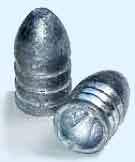Weapons
| In the Gisborne district the traveller will be taught to
defend himself with Pākehā weapons - the Minie rifle, the
sword and the revolver. Te Kooti and his followers had used
these weapons after taking them from armouries at the
Chathams, Paparatu and elsewhere. In these lines he is implying that he had indeed used these murderous weapons in the past but Pākehā have to bear responsibility for this, because they were the ones who brought these weapons here. When Te Kooti's rebels over-ran the the guards on the Chathams Islands, they took posession of 32 rifles, 7 revolvers, 3 swords, 4,580 rounds of rifle ammunition and 200 revolver cartridges. The Minié rifle Maori had fought for 20 years with muskets firing a ball of lead, or a stone. This fitted loosely in the barrel so some of the explosive gases leaked and the ball only traveled about 200m. And the ball also got a spin on it when it hit one random side as it went up the barrel, making it curve to that side in flight, and reducing accuracy. And the big round ball did not go deep into flesh.  But the Minié rifle invented in 1849 had a lead bullet with a shaped end that expanded when the powder was fired, preventing gas leakage and giving it a range of 500m, while curved grooves inside the barrel made the bullet rotate, preventing spin and vastly improving accuracy, and a pointed nose improved penetration into flesh. Swords Maori had fought hand-to-hand with taiaha blades made of kahikatoa wood. But the Europeans' sharper, stronger and lighter steel swords were far more deadly. Revolver Maori had previously used muzzle-loading flintlock pistols that were slow to reload and even less accurate than muskets. But by the 1860s, the British had Samuel Colt's revolver. It used percussion caps, powder in brass carridges, and six shaped bullets. It was accurate, with a good range and a rapid rate of fire. |